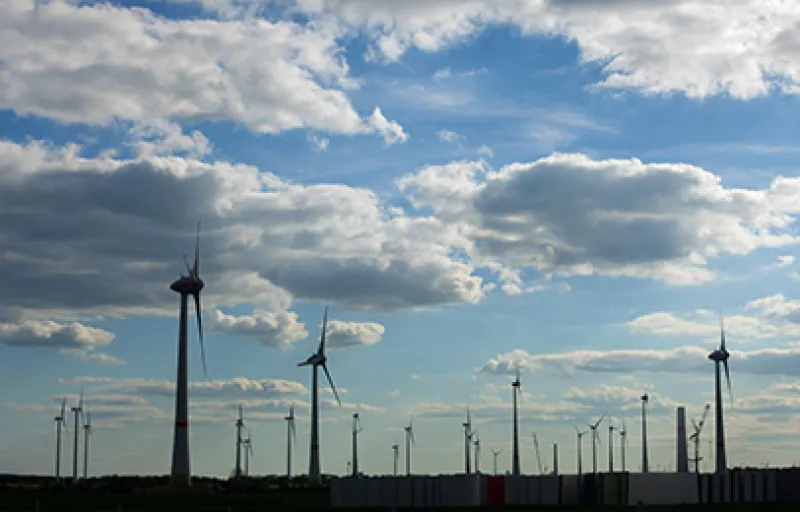It’s getting easier for bond investors to be green. Environmentally sound investment options, once confined to the equity market, are sprouting in fixed income.
U.S. investors, although showing some signs of interest, have been slower to accept green investment than their European counterparts. Some strides have been made by some of the larger pension funds in the U.S. toward green bonds, despite resistance to environmental issues in a number of states.
In Europe the effort is more apparent. The U.K.’s Green Investment Bank (GIB), based in Edinburgh, was founded in 2012 and capitalized with £3.8 billion ($6.35 billion) from the U.K. government. GIB operates on what it calls its “double bottom line,” investing in projects that don’t just offer a positive return but also leave the world a bit cleaner. In 2014 GIB has a goal of allocating £700 million to carbon-reducing projects as it seeks deals in offshore wind power, waste reduction and energy efficiency.
Started as a product of development banks such as the World Bank, the European Investment Bank, the African Development Bank and the International Finance Corp. (IFC), green bonds have expanded to other issuers, notes Heike Reichelt, head of investor relations and new products with the World Bank in Washington, D.C. “This is actually quite common for many markets, in which the World Bank and other development banks come in first, and then other issuers follow,” says Reichelt.
Outside of the international development realm, household-name financial institutions such as Goldman Sachs Group, Bank of America Merrill Lynch and TD Bank Group have gotten into the game. Standard & Poor’s estimates that in 2014 green bond issues will reach $20 billion — twice the $10 billion issued in 2013. Playing no small role is the successful issue last month of the largest-ever green bond by French power company GDF Suez for €2.5 billion.
Reichelt says green bonds really hit their stride in 2013, with many new issuers emerging and a more concerted issuance effort.
For its part, Goldman Sachs has been making forays into green bonds in Europe. “Given the strength of our institutional investor relationships, is this going to be a new market that both sides — issuers and investors — are keen to promote and get involved in?” asks Robert Ritchie, Goldman Sachs’ head of corporate debt capital markets in Europe. He says it has been a natural fit, and there has been some movement in that direction.
Although the orders have come more from dedicated green investors, Ritchie says anecdotally that more corporate investors are starting to look at green bond issues and dedicate cash to these investments. “We are a long way from saying there is too much green bond supply, however,” he adds.
Still, says Suzanne Buchta, BofA Merrill Lynch’s global co-head of green debt capital markets, last year was bit of a watershed for green bonds. As Buchta notes, “Investors started to say throughout 2007 to 2013, of increasing volumes, ‘We would like to see large, liquid, benchmark-sized, index-eligible transactions.’”
As financial institutions conveyed that message to issuers, she says, other events fueled green bonds’ popularity. The first was IFC’s inaugural $1 billion, triple-A green bond issue in February 2013, offering three-year bonds with a 0.625 percent yield, 15 basis points above U.S. Treasuries. “They achieved large, liquid and index-eligible [status]. That got a lot of attention,” she says, adding that within days KEXIM, the South Korean government-controlled Export-Import Bank of Korea issued its own bond, rated Aa3 by Moody’s with a wider spread: 95 basis points above Treasuries for a five-year bond. “And in a low-yield environment, a wider spread gets a lot of attention,” she says.
Buchta, one of the authors of the Green Bond Principles — a voluntary set of guidelines released in January that encourages transparency, disclosure and integrity in the green bond market — says 2013 was the first year in some time when investors weren’t fighting off economic instability and were willing to look at new opportunities.
“This product is better understood now than it was six months ago. There are more people considering it, and there are more liquid securities being issued,” says Karim Saleh, investment-grade syndicate banker with Goldman Sachs in London. “But that has coincided with an increasing amount of liquidity in the markets, particularly in Europe over the past two or three years.”
U.S. pension funds such as California State Teachers’ Retirement System, TIAA-CREF and the New York State Common Retirement Fund have shown interest in green bonds, says Reichelt, “but I think it’s not as broad for pension funds in the U.S. as it is in Europe.” The issue in part is getting investors to know about the product and realize it was developed for mainstream investors interested in climate issues, not just for the traditional sustainable and responsible investment community, she explains. In Europe several Swedish national pension funds as well as pension funds in the Netherlands and France have already allocated to green bonds.
Buchta agrees that more needs to be done to debunk the myth among investors that yield is lost in the green space.
As larger pension funds accept green bonds, more investments will likely be made, and others may follow. Still, some speed bumps in the growth of green bonds have occurred. A May 28 New York Times article pointed out that since 2013 more than a dozen U.S. states have taken up proposals to weaken or eliminate green energy mandates and incentives.
Change will come but slowly. And whereas it’s not apparent today, the green bond trend is growing in Europe and the U.S. As Goldman’s Ritchie says, “In five years [green bonds] might be more distinct — and a rather big slice of the bond market will be green.”
Get more on investors.






